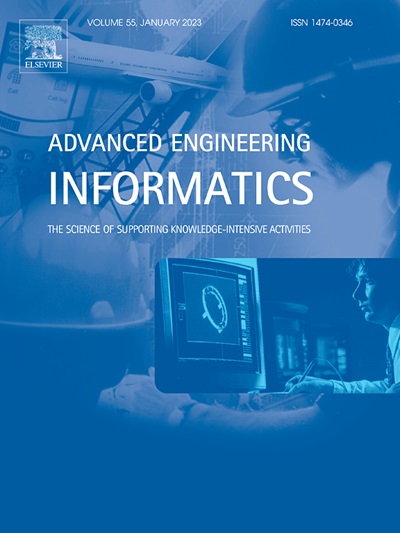基于A-DSRSN和SHAP的裂隙拱坝位移多目标预测与动态解释方法
IF 8
1区 工程技术
Q1 COMPUTER SCIENCE, ARTIFICIAL INTELLIGENCE
引用次数: 0
摘要
为解决含裂缝拱坝位移预测精度和可解释性方面的挑战,结合单目标最大相关叠加多目标预测法(MCSST)和SHapley加性解释法(SHAP)的解释方法,提出了基于注意机制的深度堆叠残余收缩网络(a - dsrsn)。构建含裂缝拱坝位移多目标预测与动态解释方法。首先,采用静水-空气温度-时间(HTAT)模型和静水-温度-裂缝-时间(HTCT)模型初步选择影响位移的因素。随后采用弹性网(ElaNet)和主成分分析(PCA)进行特征选择和提取。然后,将卷积块关注模块和剩余收缩块集成构建A-DSRSN。利用a - dsrsn模型,建立了基于MCSST的多目标位移预测方法。此外,将A-DSRSN模型与SHAP分析相结合,开发了预测结果的全局、局部和动态解释方法。最后,通过与现有基线方法的比较,验证了该方法的有效性。结果表明,A-DSRSN模型的预测精度优于基线方法,而MCSST方法的整体预测精度更高。本文的解译方法揭示了模型预测的过程,准确识别了水位上升和水位、温度下降时期的主导影响因素。该研究为大坝位移预测提供了一种新的方法,对大坝长期健康监测和安全管理具有重要的实际应用价值。本文章由计算机程序翻译,如有差异,请以英文原文为准。
Multi-target prediction and dynamic interpretation method for displacement of arch dam with cracks based on A-DSRSN and SHAP
To address the challenges of accuracy and interpretability in displacement prediction for arch dams with cracks, this study proposes a deep stacked residual shrinkage network based on attention mechanisms (A-DSRSN), combined with the multi-target prediction method leveraging maximum correlated stacking of single-target (MCSST) and the interpretive method of SHapley Additive exPlanations (SHAP), constructing a multi-target prediction and dynamic interpretation method for displacement of arch dams with cracks. Initially, factors influencing displacement are preliminarily selected using hydrostatic-air temperature–time (HTAT) and hydrostatic-temperature-crack-time (HTCT) models. Elastic net (ElaNet) and principal component analysis (PCA) are subsequently employed for feature selection and extraction. A-DSRSN is then constructed by integrating convolutional block attention modules and residual shrinkage blocks. Using the A-DSRSN model, a multi-target displacement prediction method based on MCSST is established. Furthermore, the integration of the A-DSRSN model with SHAP analysis develops global, local, and dynamic interpretation methods for prediction results. Finally, a case study demonstrates the validity of the proposed method by comparing it with existing baseline approaches. The findings reveal that the A-DSRSN model outperforms baseline methods in prediction accuracy, while the MCSST method enhances overall predictive precision. The interpretation method in this paper reveals the process of model prediction, accurately identifying dominant influencing factors during water level rise and periods of water level and temperature decline. This research provides a novel method for dam displacement prediction, which has significant practical application value for long-term health monitoring and safety management of dams.
求助全文
通过发布文献求助,成功后即可免费获取论文全文。
去求助
来源期刊

Advanced Engineering Informatics
工程技术-工程:综合
CiteScore
12.40
自引率
18.20%
发文量
292
审稿时长
45 days
期刊介绍:
Advanced Engineering Informatics is an international Journal that solicits research papers with an emphasis on 'knowledge' and 'engineering applications'. The Journal seeks original papers that report progress in applying methods of engineering informatics. These papers should have engineering relevance and help provide a scientific base for more reliable, spontaneous, and creative engineering decision-making. Additionally, papers should demonstrate the science of supporting knowledge-intensive engineering tasks and validate the generality, power, and scalability of new methods through rigorous evaluation, preferably both qualitatively and quantitatively. Abstracting and indexing for Advanced Engineering Informatics include Science Citation Index Expanded, Scopus and INSPEC.
 求助内容:
求助内容: 应助结果提醒方式:
应助结果提醒方式:


